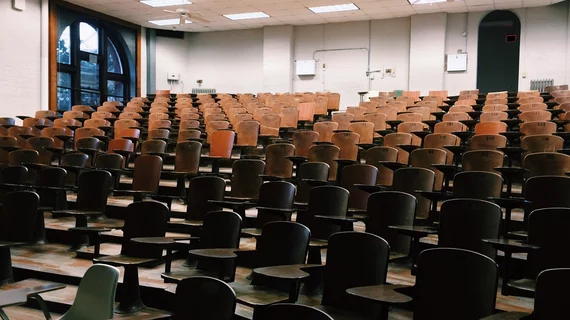Mixing interactive, traditional teaching techniques beneficial for radiology residents
Radiology residents retain more information from hybrid lectures that include an interactive element than traditional lectures, according to new research published in Academic Radiology.
Researchers designed a new “30/30” teaching style for the sake of this study. The new format combined a traditional 30-minute didactic lecture with 30 minutes of interactive learning, giving trainees the immediate opportunity to show they had been paying attention during the didactic portion of the study. The interaction portion was in a “hot seat” format, meaning trainees could be called on at any time to participate.
“The purpose of this study is to investigate the impact of the 30/30 teaching format upon trainee short-term retention, long-term retention, and attention in comparison to a traditional didactic lecture, with the hypothesis that the 30/30 would produce superior outcomes in all metrics by leveraging the benefits of active learning while mitigating possible disadvantages of other active learning formats,” wrote lead author Vishwan Pamarthi, MD, department of radiology at Duke University Medical Center in Durham, North Carolina, and colleagues.
For the study, six lectures that would have typically had a traditional format were substituted with the 30/30 teaching format. Trainees participating in those lectures then completed a quick eight-question retention test on the material they had just learned about. The researchers also had trainees participating in six traditional lectures complete retention tests, allowing comparisons to be made between the two teaching methods.
Overall, short-term retention was 75.7% for hybrid presentations and 63.2% for traditional lectures. Long-term retention was 59.4% for hybrid presentations and 49.3% for traditional lectures.
The authors also wanted to assess if trainees paid attention throughout the presentation. While 61.6% of questions from the first three quarters of traditional lectures were answered correctly, 49.3% of questions from the final quarter were answered correctly—a “significant” drop, according to Pamarthi and colleagues. For the hybrid presentations, meanwhile, the percentage of correct answers remained in the 67%-73% range for the entire lecture, with no drop in the final quarter.
“These findings reinforce the value of active learning methods in a field in which traditional lectures remain common,” the authors wrote. “This benefit is likely due to the synthesis and application of recently learned material during a ‘hot seat’ case-based format, as well as heightened attention in anticipation of being asked to apply lecture material on cases in a public forum.”
The team did note that their study had numerous limitations. Resident identities were anonymous, for instance, so there is technically a chance residents “submitted responses to tests for lectures that they did not attend, despite being asked not to do so.” Also, no “satisfactory method” could be determined for measuring the quality of the material being taught.

